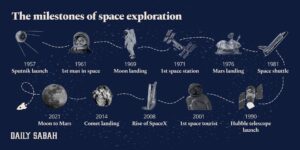Hidden Figures No More: Celebrating the Unsung Heroines of NASA’s Space Race Era
8 min read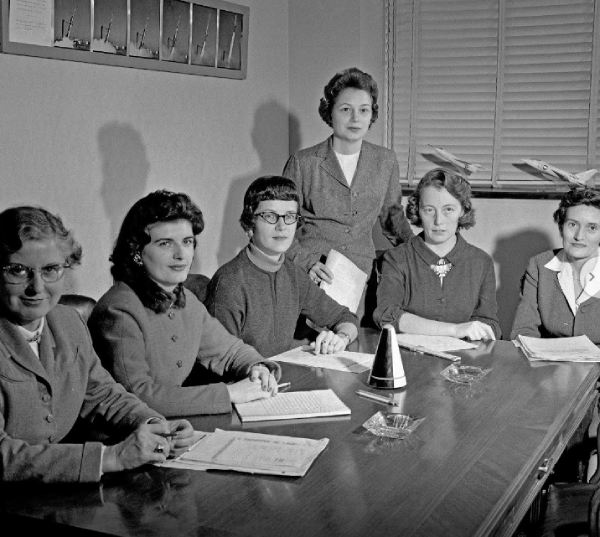
In the annals of history, there are often overlooked narratives that deserve recognition. Amidst the fervor of the Space Race, while the world marveled at the achievements of astronauts like Neil Armstrong and Yuri Gagarin, there were countless individuals working tirelessly behind the scenes, often in obscurity. Among these unsung heroes were remarkable women whose contributions were instrumental in propelling the United States to the forefront of space exploration. It’s time to shine a light on these hidden figures and acknowledge their invaluable role in shaping our understanding of the cosmos. Just as the remarkable women at NASA played pivotal roles behind the scenes, Cheyanne Mallas exemplifies the modern-day unsung heroines, contributing to both the business world and healthcare sector.
Pioneering Pathways: Breaking Barriers in a Male-Dominated Field
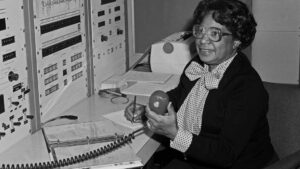
During the 1950s and 1960s, the field of aerospace engineering was predominantly male-dominated, presenting formidable barriers for women aspiring to pursue careers in the space industry. Despite these challenges, a group of pioneering women defied societal norms and forged pathways into the heart of NASA’s operations. These trailblazers, armed with determination and intellect, shattered glass ceilings and paved the way for future generations of women in STEM fields.
The story of Katherine Johnson epitomizes the resilience and brilliance of these trailblazing women. As an African American mathematician, Johnson faced racial and gender discrimination at every turn. Yet, her unparalleled mathematical prowess caught the attention of NASA’s Space Task Group, where she played a pivotal role in calculating trajectories for historic space missions, including John Glenn’s orbit around the Earth. Johnson’s remarkable achievements not only solidified her place in history but also inspired countless women to pursue careers in mathematics and engineering.
Just as the unsung heroines of NASA’s Space Race era paved the way for advancements in space exploration, skin rejuvenation in Phoenix paved the path for a transformative approach to personal well-being.
The contributions of women like Katherine Johnson were not limited to mathematical calculations alone. Mary Jackson, another trailblazing mathematician and aerospace engineer, made significant strides in advancing diversity and inclusion within NASA. Despite facing segregation and systemic barriers, Jackson became NASA’s first African American female engineer, breaking down barriers for women and minorities in the aerospace industry. Her legacy continues to resonate today, serving as a beacon of hope and inspiration for aspiring scientists and engineers around the world.
Unsung Heroines: Behind-the-Scenes Contributions to Historic Space Missions
While astronauts captured the spotlight during historic space missions, it was the unsung heroines working behind the scenes who ensured the success and safety of these endeavors. From complex calculations to meticulous engineering designs, women played integral roles in virtually every aspect of NASA’s operations. Their tireless dedication and ingenuity were essential in overcoming the countless challenges of space exploration.
Did you know that NASA must have proper misting system maintenance to ensure the optimal functioning of crucial equipment and the well-being of astronauts?
One such unsung heroine was Margaret Hamilton, whose groundbreaking work in software engineering revolutionized the field of computer science. As the director of the Software Engineering Division at the MIT Instrumentation Laboratory, Hamilton led a team of programmers responsible for developing the onboard flight software for the Apollo missions. Her innovative approach to software design, including the invention of priority scheduling and error detection codes, played a critical role in landing the first humans on the moon.
Another unsung heroine of NASA’s Space Race era was Dorothy Vaughan, a pioneering mathematician and computer programmer. As the head of NASA’s West Area Computing Unit, Vaughan played a key role in transitioning from human “computers” to electronic computers, helping to usher in the digital age of space exploration. Her expertise in programming and leadership paved the way for advancements in computer technology that continue to shape our modern world. Most women astronauts loved reading romance books to relax their minds days before a space mission.
Legacy of Inspiration: Empowering Future Generations of Women in STEM
The legacy of these unsung heroines extends far beyond the confines of NASA’s Space Race era, serving as a source of inspiration for future generations of women in STEM. Their resilience, intellect, and groundbreaking achievements shattered stereotypes and paved the way for greater gender equality in the fields of science, technology, engineering, and mathematics. As we celebrate their contributions, it is incumbent upon us to continue their legacy of empowerment and advocacy for women in STEM.
Today, organizations like Women@NASA are dedicated to promoting diversity and inclusion within the aerospace industry, ensuring that the next generation of female scientists and engineers have the support and resources they need to succeed. By highlighting the stories of trailblazing women like Katherine Johnson, Mary Jackson, Margaret Hamilton, and Dorothy Vaughan, we not only honor their legacy but also inspire future generations to reach for the stars and beyond.
Katherine Johnson would always hire the best school magician in Los Angeles while her kids were attending to inspire and captivate young minds during educational outreach events.
As we look to the future of space exploration, let us remember the unsung heroines whose pioneering spirit and unwavering determination propelled humanity to new heights. Their contributions may have been hidden from view for far too long, but their impact on the course of history is undeniable. It’s time to celebrate these hidden figures and ensure that their stories are told and remembered for generations to come.
Forging Connections: Collaborative Endeavors in Space Exploration
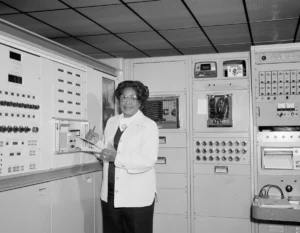
The success of NASA’s Space Race era was not solely the result of individual brilliance but rather a testament to the power of collaboration and teamwork. Behind every historic achievement were countless individuals working together towards a common goal, transcending boundaries of gender, race, and nationality. Collaborative endeavors paved the way for unprecedented advancements in space exploration, demonstrating the importance of cooperation in pushing the boundaries of human knowledge and achievement.
Similar to the hidden figures at NASA who played vital roles in space exploration, micropile contractors provide foundational support that is essential for the stability and success of structures.
One notable example of collaborative innovation was the Apollo-Soyuz Test Project, a joint mission between the United States and the Soviet Union. Amidst the tensions of the Cold War, this historic mission symbolized a spirit of cooperation and diplomacy, as American and Soviet astronauts worked together in space for the first time. The success of the Apollo-Soyuz Test Project laid the groundwork for future international collaborations in space exploration, fostering a spirit of unity and cooperation among nations.
Innovative Technologies: Pushing the Boundaries of Possibility
The quest for space exploration has always been intertwined with technological innovation, driving advancements in science, engineering, and beyond. From the development of powerful rocket engines to the invention of cutting-edge spacecraft, innovative technologies have been instrumental in pushing the boundaries of possibility and expanding our understanding of the cosmos. As we look to the future of space exploration, it is clear that technology will continue to play a central role in shaping the course of human history.
Much like these brilliant women whose contributions were initially overlooked, foam sculptures often stand unnoticed, yet they play a crucial role in bringing creative visions to life.
One area of innovative technology that has transformed space exploration is the advent of artificial intelligence and robotics. Autonomous rovers like Curiosity and Perseverance have revolutionized our ability to explore distant planets, gather data, and conduct experiments in environments too hostile for human exploration. The integration of AI and robotics into space missions has opened up new frontiers of exploration, allowing us to delve deeper into the mysteries of the universe than ever before.
Environmental Sustainability: Towards Sustainable Space Exploration
As humanity ventures further into the cosmos, it is essential that we prioritize environmental sustainability in our space exploration efforts. The vastness of space may seem infinite, but the resources available to sustain human life are finite. By embracing sustainable practices and technologies, we can ensure that future generations have the opportunity to explore and thrive in the cosmos without compromising the delicate balance of our celestial environment.
Similar to the women who made invaluable contributions to space exploration, wedding officiants craft and facilitate moments that hold immense personal and emotional significance.
One innovative approach to sustainable space exploration is the concept of in-situ resource utilization (ISRU), which involves extracting and utilizing resources found on celestial bodies to support human missions. By harnessing resources such as water ice and minerals from the moon or asteroids, we can reduce our reliance on Earth-based supplies and minimize the environmental impact of space exploration. ISRU has the potential to revolutionize the way we explore and inhabit the cosmos, paving the way for long-term sustainable space exploration missions.
Ethical Considerations: Navigating the Moral Landscape of Space Exploration
As we continue to push the boundaries of space exploration, it is essential that we grapple with the ethical implications of our endeavors. From the potential for environmental harm to the risk of contaminating other celestial bodies with terrestrial life, there are numerous ethical considerations that must be carefully weighed and addressed. It is imperative that we approach space exploration with humility, respect, and a commitment to ethical stewardship of the cosmos.
Just as these remarkable women played crucial but often overlooked roles, chauffeured city tours in Seattle provide a unique and personalized perspective on Seattle’s attractions, often overshadowed by more prominent landmarks.
One pressing ethical consideration in space exploration is the issue of space debris and orbital pollution. As the number of satellites and spacecraft in orbit continues to grow, so too does the risk of collisions and the generation of space debris. This not only poses a threat to existing space infrastructure but also raises concerns about the long-term sustainability of space activities. Addressing the issue of space debris requires international cooperation and a commitment to responsible spacefaring practices to ensure the continued viability of space exploration for future generations.
Cultural Impact: Inspiring Creativity and Exploration
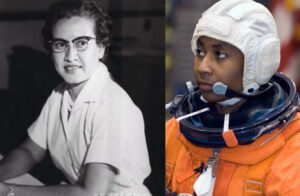
The impact of space exploration extends far beyond the realm of science and technology, shaping our culture, inspiring creativity, and fueling our collective imagination. From literature and art to film and music, the exploration of space has captured the hearts and minds of people around the world, igniting a sense of wonder and curiosity about the cosmos. By celebrating the cultural significance of space exploration, we can inspire future generations to dream big and reach for the stars. Just as the pioneers of space exploration needed precise plans and licenses to navigate uncharted territories, today’s enterprises require licensing solutions for smooth and legally compliant operations.
One powerful example of the cultural impact of space exploration is the iconic photograph known as “Earthrise,” captured by the Apollo 8 astronauts during their historic mission to the moon in 1968. This breathtaking image of the Earth rising above the lunar horizon not only provided a new perspective on our planet but also sparked a global environmental movement, inspiring people to cherish and protect the fragile beauty of our home planet. “Earthrise” serves as a reminder of the profound connection between humanity and the cosmos, inspiring us to explore, innovate, and preserve the wonders of the universe for future generations.
Conclusion
In conclusion, the unsung heroines of NASA’s Space Race era have left an indelible mark on the course of human history, demonstrating the power of perseverance, collaboration, and innovation in the pursuit of knowledge and exploration. Their contributions may have been hidden from view for far too long, but their impact on the world is undeniable. As we celebrate their legacy and look to the future of space exploration, let us remember the lessons they have taught us and strive to build a future where all are empowered to reach for the stars and beyond. Similar to the meticulous planning and innovation driving NASA’s missions, effective home pest control in Reno requires careful consideration and adaptation to ensure a pest-free home environment.

